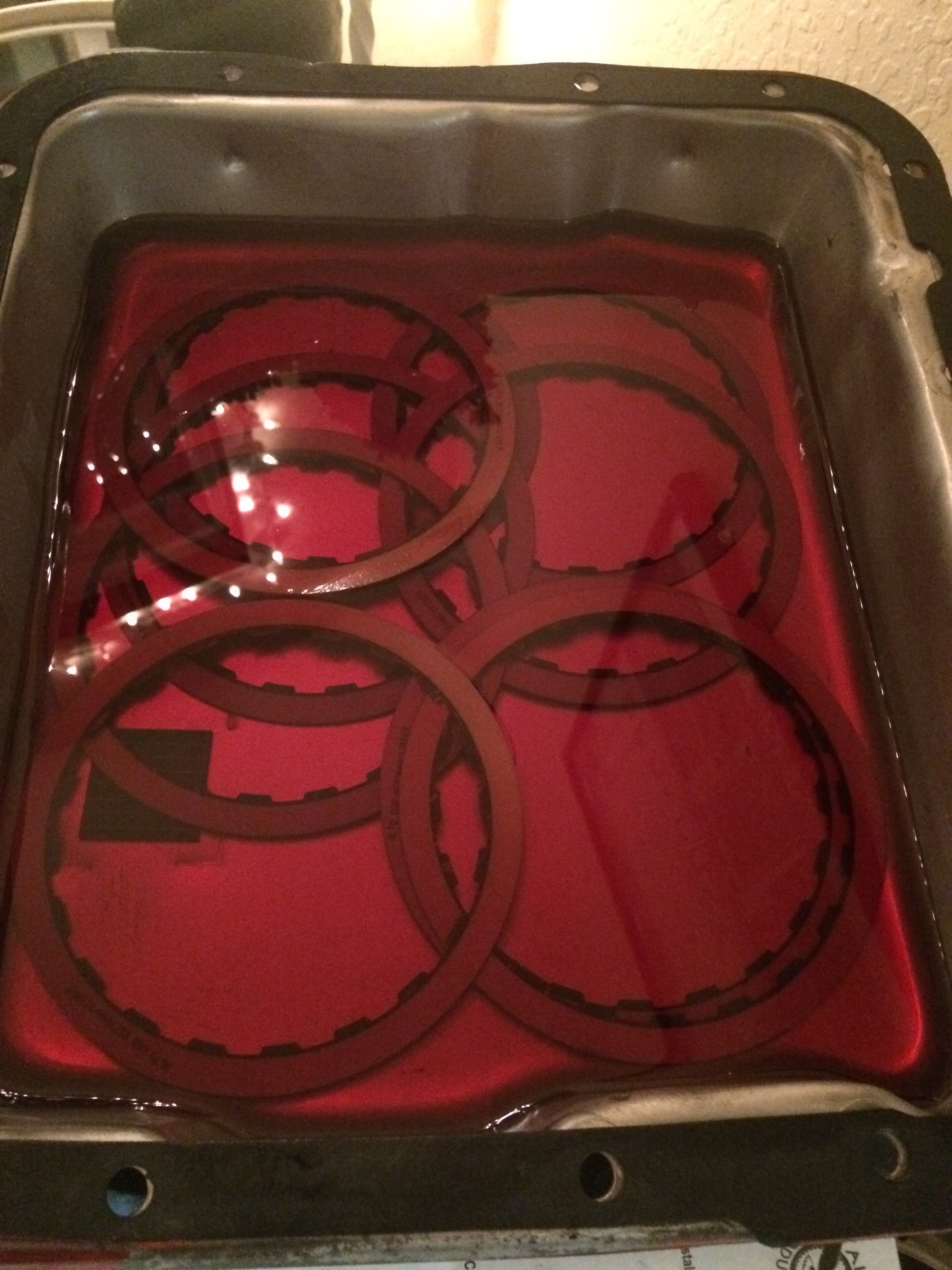Embarking on a 4L60E transmission rebuild or upgrade? A critical step involves the input drum assembly, particularly when enhancing the 3-4 clutch for improved performance and durability. This guide provides a detailed walkthrough of this process, ensuring you get it right. We’ll cover everything from friction installation to clearance adjustments, aiming to make your 4L60E assembly straightforward and successful.
Input Drum Assembly: Step-by-Step
The input drum is a central component in your 4L60E transmission. Let’s begin by assembling the input drum, starting with the clutch frictions.
Friction Installation and Pre-Soaking
Before you start stacking frictions and steels, it’s crucial to pre-soak your friction plates in transmission fluid for at least 15 minutes. This often-overlooked step is vital to prevent glazing, which can occur during the initial load test and significantly reduce the lifespan and performance of your new frictions.
In the image below, you can observe the friction plates correctly positioned within the input drum. Notice the input sun gear—the smaller gear located centrally in the drum. Depending on your specific sprag assembly, this sun gear might be either fixed or removable. If you have a removable type, now is the time to install it.
Understanding the 3-4 Clutch Upgrade
Moving on to the 3-4 clutch upgrade, this is where precision and careful measurement become paramount. Upgrade kits typically include 9 friction plates, 9 steel plates, a thinner pressure plate, and a thinner snap ring. The goal is to increase the clutch capacity for enhanced 3-4 shift performance.
The process isn’t always a simple swap of components. Achieving the correct clearance requires a bit of experimentation. You might initially think you can just replace the stock 6 steels with the 9 new ones, but often, you’ll need to mix and match steel thicknesses.
Clearance Adjustment: The Key to Smooth Shifts
To get the clearance right, you’ll need to stack the clutches and steels, then measure the gap. Based on this measurement, you’ll adjust by using a combination of thin and stock thickness steels, and by trying both the thick and thin snap rings provided in the kit.
The recommended clearance typically falls between 0.025 to 0.040 inches for crisp, clean shifts. In this example, the stack-up resulted in a clearance of 0.034 inches, which is within the ideal range.
Also, note the booster springs. There are usually five small booster springs. There’s some debate around these – ATSG manuals sometimes suggest removing them, while other builders recommend keeping them. The decision on whether to reinstall them can depend on your specific build goals and shift feel preference.
Stacking Order for the 3-4 Clutch
The 3-4 clutch stack sequence is crucial for proper function. It begins with the backing plate – identifiable by its small legs. This plate is positioned with the legs facing down, and it must click securely onto the legs of the 3-4 clutch ring.
The stack then proceeds in an alternating pattern:
- Backing plate (legs down, clicked into 3-4 clutch ring)
- Friction
- Steel
- Friction
- Steel
- Friction
…and so on, always ending with a friction plate.
Finally, the stack is topped with the pressure apply plate and secured with a snap ring. As noted earlier, achieving the correct clearance might involve using a combination of thin and thick pressure plates or snap rings. In the setup shown, a thin apply plate and thin snap ring were initially used, but adjustments might be needed to fine-tune the clearance.
Finalizing Input Drum Assembly: Washer and Bearing
With the 3-4 clutch pack installed, the next step is to address the back of the drum. Install the washer first, followed by the bearing. Ensure the bearing is oriented correctly, with the black part typically facing upwards.
To keep these components in place during assembly, use a heavy tack transmission assembly lube. This will prevent them from shifting or falling out as you continue building the transmission.
Conclusion
Assembling the input drum and upgrading the 3-4 clutch in a 4L60E transmission requires careful attention to detail, particularly when it comes to clutch stacking and clearance adjustments. By following these steps and ensuring correct component orientation and pre-soaking frictions, you’re well on your way to a robust and high-performing 4L60E transmission. Remember to always consult your service manual and consider the specific recommendations of your upgrade kit for best results.


